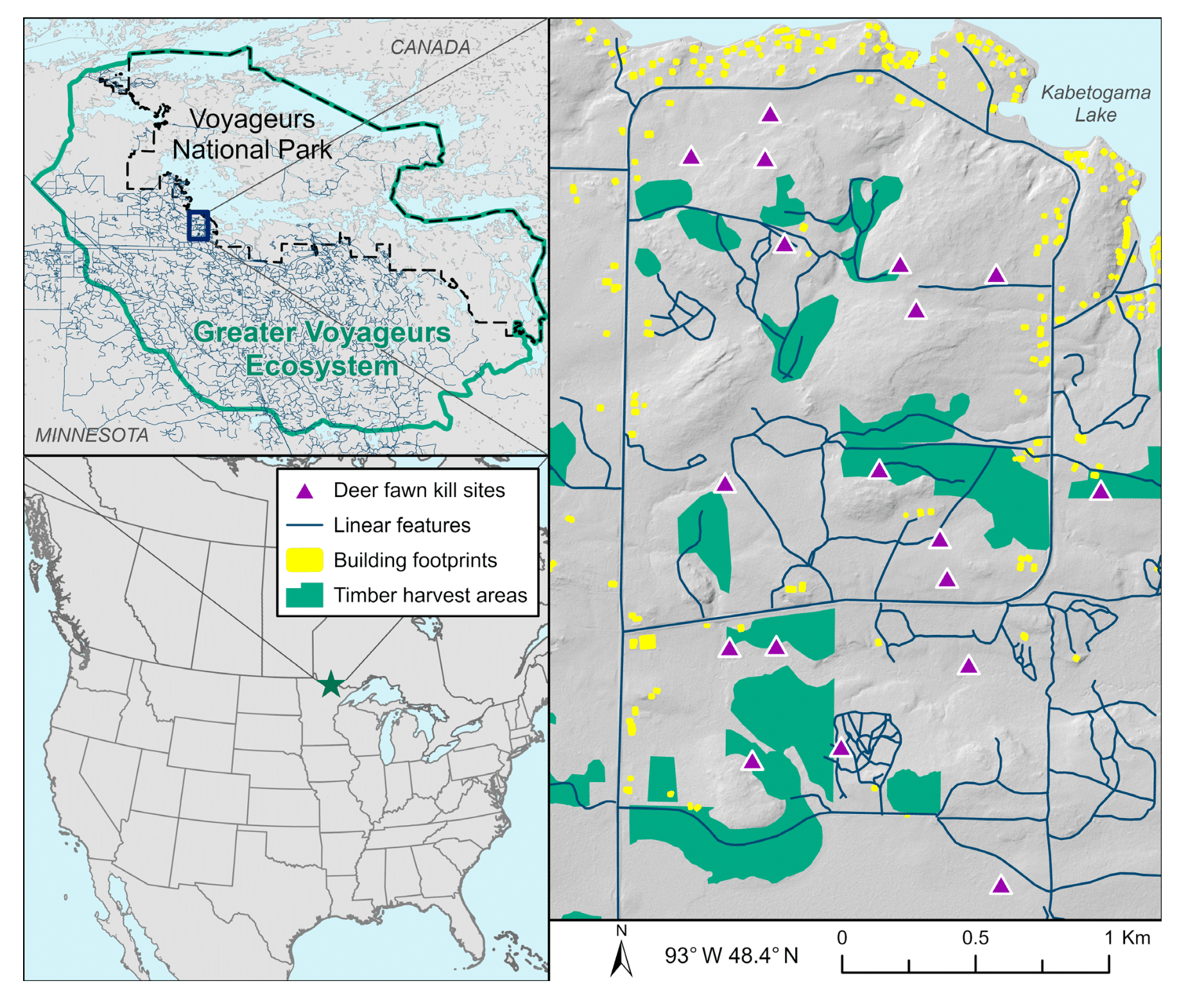
New research from the Voyageurs Wolf Project and partners has revealed the extent to which the ways people modify northern Minnesota’s landscape affect the predator-prey relationship of wolves and white-tailed deer. The team of scientists who published the new findings say humans have significant effects on where and how wolves hunt, especially fawns.
Three major ways people change the north woods include logging, road and trail construction, and housing. Each has a different way of helping wolves find and kill deer.
“The premise is really quite simple: human activities change where deer are on the landscape, and wolves go where the deer are,” said Dr. Thomas Gable, a postdoctoral researcher at the University of Minnesota and co-lead author of the study. “Plus, humans have done an excellent job of creating and maintaining a diverse, well-connected web of roads, trails, and other cleared linear features that are ideal corridors for wolves to hunt deer.”
The study was conducted using GPS collars placed on wolves, allowing scientists to track their every move. By visiting sites where wolves spend time, the team found 427 wolf-killed fawns over six years of searching. They analyzed where those kills occurred, and how human landscape modifications changed the relationship between the species. The research was recently published in the peer-reviewed journal Ecological Applications.

Multiple benefits
The three categories of human changes to the landscape have different ways of aiding wolves. Logging creates forest habitat that deer prefer for browsing, and which seemingly offer abundant places to hide fawns. But wolves appear to understand these are rich hunting areas, and disproportionately kill fawns at such sites.
Residences and cabins are another draw for deer. It has previously been thought that wolves avoid human habitations, and deer congregate around humans to avoid the predators. The study actually found that deer probably gather around people because of feeding, and wolves are happy to hunt around houses.
“Although the high concentration of deer near human development attracts wolves to areas near people, wolves still definitely avoid encountering people when hunting fawns around human infrastructure,” said Austin Homkes, a researcher for the Voyageurs Wolf Project and co-lead author of the study. “Wolves spend substantial time in close proximity to occupied cabins and residences, and yet almost no one sees them.”

‘Tipped the scales’
Finally, wolves in the study killed more fawns near roads, trails, and power lines (“linear features” in technical terms) than in untracked areas. This is because the human made routes provide easier cross-country travel than going through dense forest. It lets wolves travel quickly and easily, without using as much energy, between other high-value hunting areas, like clear-cuts and residences.
One key question remaining is whether human activities merely shift where and how wolves hunt fawns, or if people actually make it possible for wolves to kill more deer than they would otherwise. The researchers say they hope to study this more in the future, and are watching efforts in other places to remediate unused linear features like logging roads to eliminate an advantage for wolves.
“When we put all of the pieces together, it is pretty clear that the cumulative effects of all major aspects of human activity in the Northwoods — logging, infrastructure development, and road/trail development — have fundamentally changed where and how wolves hunt deer fawns here,” said Sean Johnson-Bice, a PhD candidate from the University of Manitoba and co-lead author of the study. “The rules of this predator-prey game change when people alter ecosystems, and it’s possible we have created conditions that may have tipped the scales in the predators’ favor.”
Reference:
Johnson-Bice, Sean M., Gable, Thomas D., Homkes, Austin T., Windels, Steve K., Bump, Joseph K., and Bruggink, John G.. 2023. “Logging, Linear Features, and Human Infrastructure Shape the Spatial Dynamics of Wolf Predation on an Ungulate Neonate.” Ecological Applications 33(7): e2911. https://doi.org/10.1002/eap.2911

